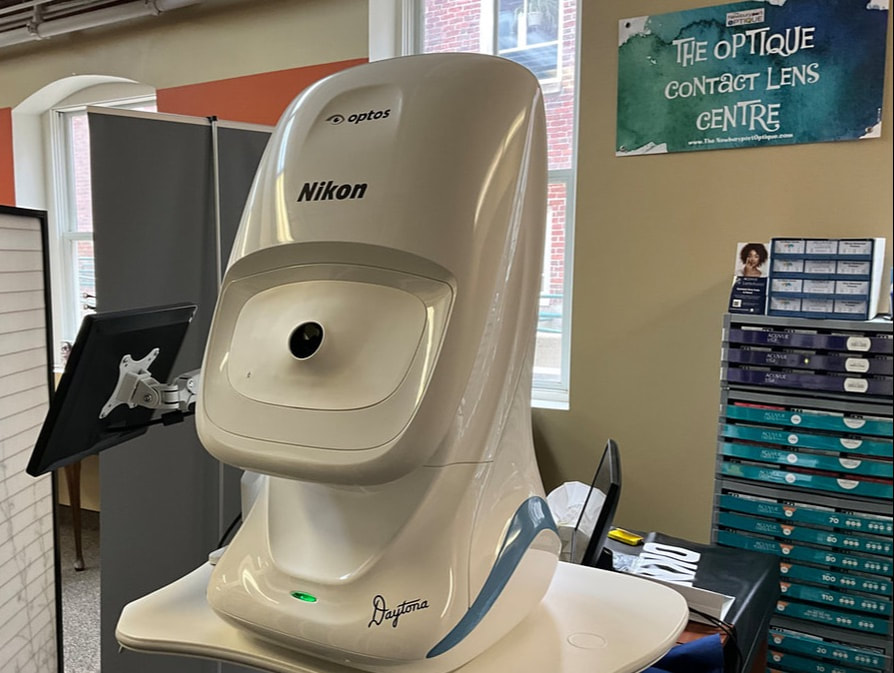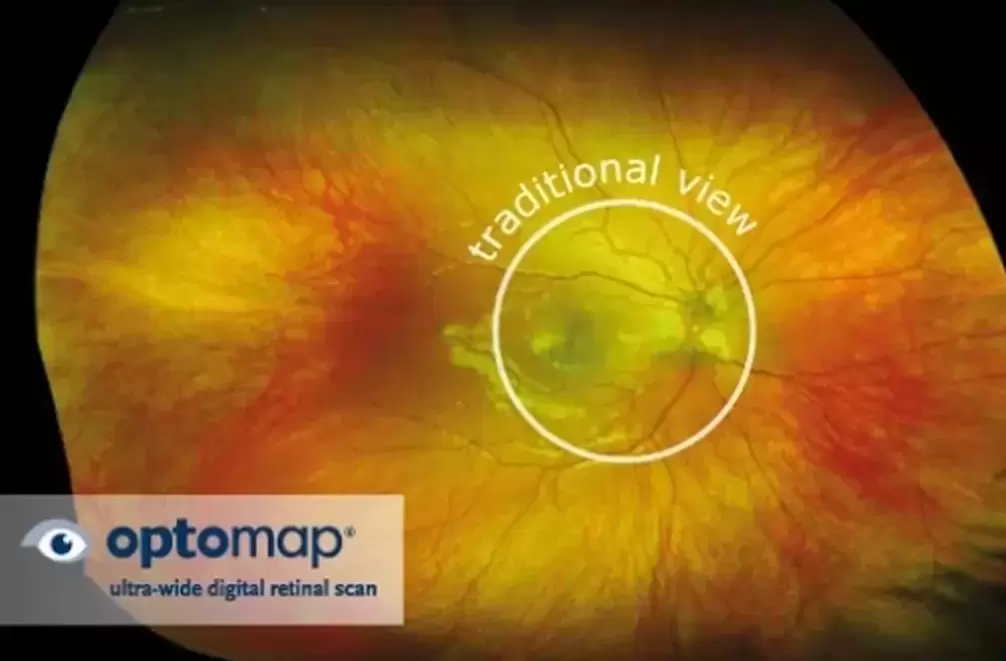If you don’t like to be dilated, this is a procedure you will want to read about.
*In some cases, the doctor still may need to dilate if it is in your best interest*
|
OPTOMAP is a technology used in optometry to take a high-resolution digital image of the retina, the light-sensitive tissue at the back of the eye. It uses advanced scanning laser technology to capture a 200-degree image of the retina, which is much wider than the traditional retinal imaging techniques. This wider image allows optometrists to detect and diagnose potential eye conditions much earlier and with greater accuracy.
One of the main benefits of OPTOMAP is that it provides a non-invasive and painless way to capture detailed images of the retina, eliminating the need for dilation drops. This means that patients no longer have to endure the discomfort and inconvenience of having their eyes dilated, which can cause blurry vision and sensitivity to light for several hours after the exam. Another great advantage of OPTOMAP is that it helps detect a wide range of eye conditions, including glaucoma, diabetic retinopathy, macular degeneration, and even certain types of cancer. By detecting these conditions early on, patients can receive treatment sooner, potentially saving their vision and preventing more serious eye problems in the future. |
Overall, having OPTOMAP technology in an optical office is a significant advantage as it provides optometrists with a powerful tool to help detect and diagnose a variety of eye conditions, while making the exam process more comfortable and convenient for patients


